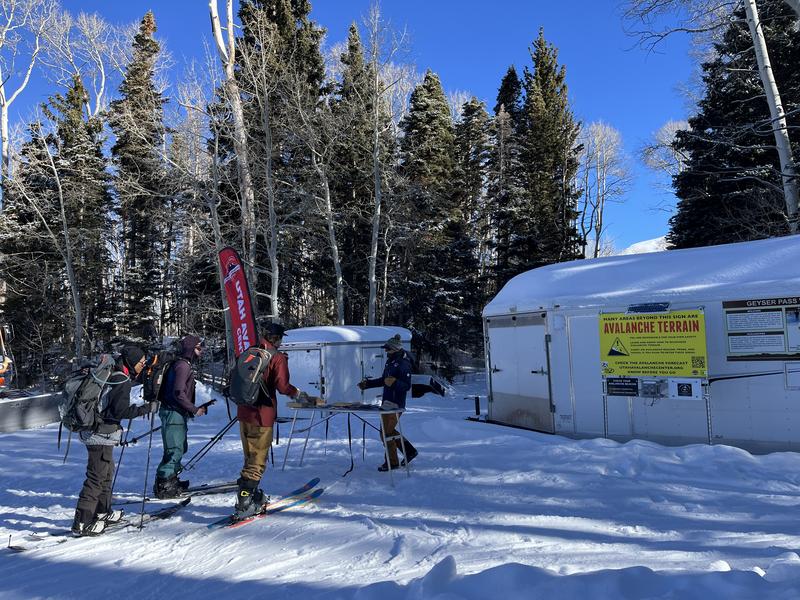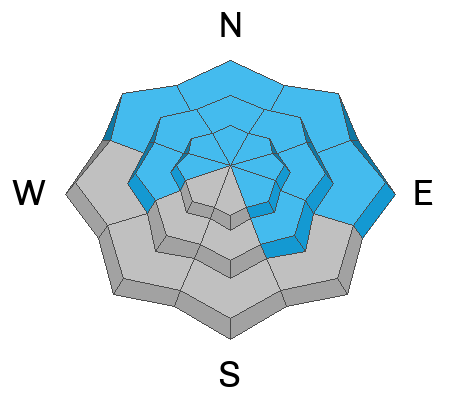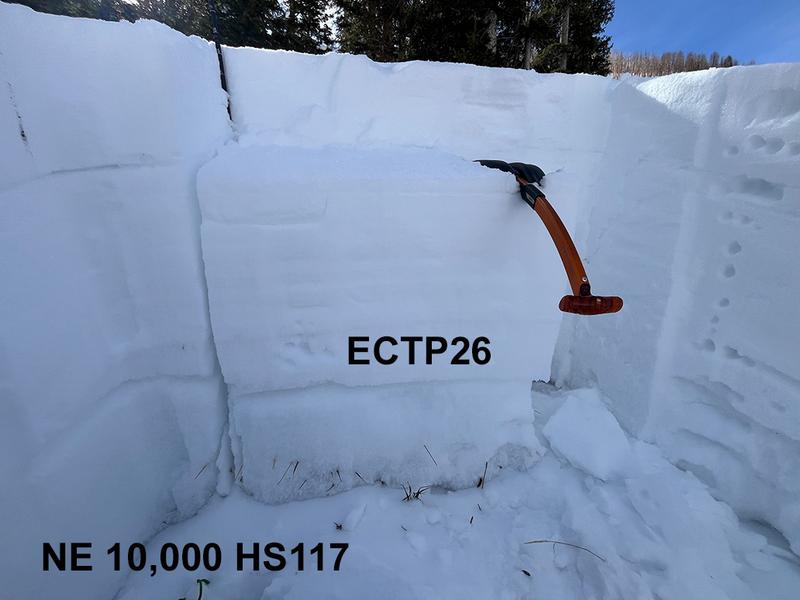It's no secret that we have a persistent weak layer of faceted snow at the base of the snowpack on W-N-E-SE aspects, and that this layer produced numerous deep avalanches during the stormy period between Feb 2-8. As the dust settles so to speak, human triggered avalanches failing on this weak layer are becoming less likely but the results remain potentially deadly.
In my travels on Saturday, I dug at lower elevations where the snowpack is shallow and continued to have reactive stability tests. Low elevations aren't the only places with a shallow snowpack and these are the areas where you are most likely to trigger an avalanche. You really need to do your homework before committing to anything steep. Dig, probe, avoid areas that are less than about 180-200 cms deep. Avoid steep, rocky terrain, thinner areas along slope margins, and steep, blind roll overs or convexities. These are all likely trigger points.
Here's how Dave is handling the current situation:
"I am continuing to evaluate the snow and terrain carefully. I am slowly biting off pieces of terrain. Nibbling at the edges before I go all in. I am probing the snowpack to be sure that I am skiing in areas with deep snow. I am ok with some overhead hazard, but I am generally keeping my slope angles low. I am choosing terrain that has gradual transitions and I am avoiding complex terrain with terrain traps and cliff bands. Remember that during moderate danger with a PWL, deep and dangerous human-triggered avalanches remain possible."
In the snowpit below, dug on a NE aspect at 10,000', an extended column test produced results of ECTP26 on weak faceted snow at the base of the snowpack. This tells us that although stubborn, we have propagation, therefore we can still trigger an avalanche, particularly in shallow snowpack areas such as this. I also found a reactive layer of surface hoar in this snowpit 22 cms down. This isn't widespread so I've taken it out of the discussion, but it's interesting nevertheless. See my
observation for more details.
Extended column test results of ECTP26 failing on the basal facets. This is somewhat stubborn but it illustrates that deep avalanches remain possible, especially in shallow snowpack areas. HS or Height of Snow is snowgeek speak for total depth.











